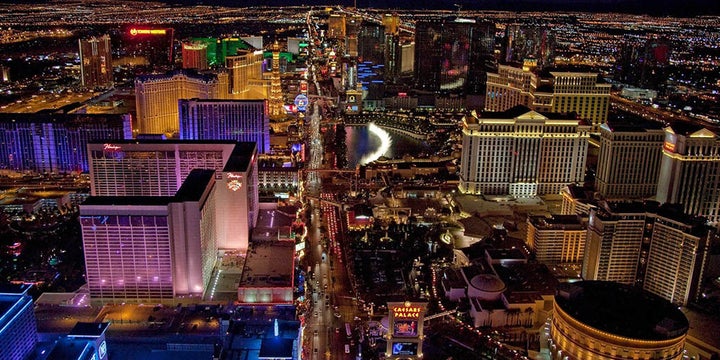
It has now been a week since a heavily-armed 64-year-old multi-millionaire broke the windows of his comped room in Las Vegas and began to spray modified semi-automatic weapons fire on innocents across the street who were listening to a country music festival.
A week later, where are we in our national conversation? Are we a nation transformed and empowered to act? No, we have simply shrugged our shoulders and have moved on to The Next Big Thing.
We all know the facts. After surveying other vantage points in several major cities, Stephen Craig Paddock smuggled a collection of modified 23 semi-automatic weapons into his room at the Mandalay Bay Hotel, placed a “Do Not Disturb” sign on his door and for roughly 12 minutes, he rained hell and death upon those below. Paddock took the time to mathematically calculate how he could maximize his firepower. He also used a legally purchased “Bump Stock” device that allowed his arsenal to mimic a fully automatic weapon.
When stories like The Las Vegas shooting break, the coverage becomes expands with a white-hot focus and the story arc follows a ghoulish choreography. Local reporters, the first on the scene, upload sketchy facts to basic cable anchors against a backdrop of emergency vehicles until network reporters arrive on the scene. Pictures of the dead are flashed upon the screen and one by one, we learn about their backstory as a random group of regular folks ended up at their tragic rendezvous.
What happens next?
Within the first day, the story shifts from the personal to the political as pro-gun and gun control groups debate their well-trod talking points. Those who perished are buried and those who are recovering are interviewed from their hospitals bed thankful to be alive. Gun sales spike, copycats emerge, impassioned editorials are written, and Las Vegas joins a horrific ledger alongside Aurora, Newtown, Columbine, Paducah or Virginia Tech. Beyond that, nothing to fix the larger problem occurs.
For a period, we were glued to our televisions and the tragedy became part of the national consciousness. The terrible moment quickly captures our attention, but it also quickly evaporates into thin air, paved over by The Next Big Thing.
We’ve already begun to move on. War Drums—or War Tweets along the Potomac signal danger along a nuclearized Korea peninsula. We are one obnoxious tweet away from Donald Trump dominating another 24-hour news cycle with an insult or an outrageous statement. The momentum for any material changes in our gun laws has slowed, regardless of a bipartisan desire to regulate these so-called “Bump-Stock” devices.
Do we all have a massive case of Extreme National Attention Deficit Disorder? Will the next shiny object distract us from the next mass killing?
Here is what I think is going on. We are under a daily barrage of media. Our senses are under constant assault by so much all-consuming content, through our television, our mobile devices, the internet, and what is left of the old media. Each time The Next Big Thing hits and competes for our attention, it explodes with such a white-hot intensity that blinds us and blots out events of the recent past.
What’s worse is that when the American news media packs up and leaves a story, it rarely returns. However, this is not the case overseas.
In 2011, after the mass killings in Norway, when 77 young adults were killed and over 300 injured by a right-wing extremist, a national conversation took hold in that country. The issues were discussed from both sides. Like 9.11 before it, this was a tragedy that touched their lives of Norwegians personally, not just a story that happened somewhere else. It was estimated that one out of four Norwegians knew somebody impacted by what took place. They took the time to comprehend the volatile cocktail of extreme viewpoints and high velocity gunfire. Laws were passed and safeguards were enacted.
Those who perished in Las Vegas deserve more than sound bites when The Next Big Thing supplants the last news cycle. They deserve a national conversation on why 80% of the gun deaths in western societies happen here in the United States.
Here’s why. During the 1970’s psychologists worried that cartoon violence would make us desensitized to real violence. During the 1980’s and 1990’s people worried that the violence in computer games would do the same.
Both are wrong. It’s not cartoon violence or video games that dulls our senses; the truth is far worse.
It’s the onslaught of real violence that desensitizes us.
